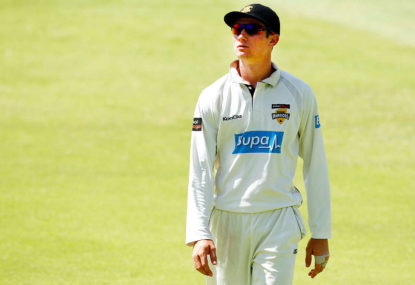T20 World Cup: Marsh named captain, Smith and Fraser-McGurk miss out
Mitch Marsh has been appointed as Australia's men's Twenty20 captain, set to lead a squad to the World Cup that does not include Steve…

In June this year, Australia played two Test matches in the West Indies. Come March 2016 Australia will have played another 15 Tests since the Caribbean tour. And this period poses one of the greatest challenges the country has faced in recent cricket history.
Yes, there have been tougher opponents in a similar space of time (think the two Ashes campaigns and South Africa tour in 2013-14). But in terms of the ratio of Test matches to calendar months, Australia has rarely seen a schedule as busy as this.
Following the West Indies series, Australia played an Ashes campaign that ultimately saw a range of experienced Test cricketers retire. A new crop of players now has the difficult task of rebuilding the team, while also facing a gruelling schedule.
This is not to say that Australian teams of the past have not seen a schedule like this. The squad that played across the 2008 winter and the 2008-09 summer played 15 Tests in this time.
There are some comparisons between this period and the current one Australia is experiencing. Both sides had enjoyed recent World Cup success and seen the departure of some key players.
Interestingly, the 15-Test period between June 2008 (ironically commencing in the West Indies as well) and March 2009 saw Australia face a number of similar issues that the current squad will undoubtedly face in the next six months.
There were new opening combinations (in Simon Katich, Phil Jacques, Matthew Hayden and Phil Hughes), a debutant wicketkeeper (Brad Haddin), and debate over spin bowlers (in Beau Casson, Stuart MacGill, Jason Krejza, Nathan Hauritz and Bryce McGain). There was also experimentation among the all-rounder position (in Andrew Symonds, Andrew McDonald and Shane Watson).
Despite these challenges, Australia only lost three of those 15 Tests, all to South Africa, while enjoying series wins against the West Indies, India, New Zealand and South Africa.
One of the key attributes for the Australian squad in this time frame was the fact that Australia had a battle-hardened, in-form Ricky Ponting at the helm. At this time, Australia also had one of the strongest middle orders in recent memory in Ponting, Michael Clarke and Mike Hussey.
Now though, Australia finds itself in a more pressing situation. The Test opponents Australia will face aren’t the strongest ranking-wise but neither is the Australian XI to be frank. Besides the four topics mentioned above, Australia’s current middle order is shaky at best and Steve Smith will no doubt take time to find his feet as captain.
This is not to cast doom and gloom over the coming six months. It is an observation that the Australian public (and the media) should try to revert from overly criticising the team performance or the contributions of individual players.
Dare I say it, just give the selectors a bit of free reign maybe? If this time last year the selectors had suggested putting Usman Khawaja, Andrew Fekete and Glenn Maxwell in the same XI, there would have been calls for them to be sacked. But this is now reality. Times have changed and so much the public perception.
With many players untried and recycled at Test level, literally anything could happen in these upcoming matches. Bangladesh could win the series. Cameron Bancroft might have one of the best opener debuts since Phil Hughes. Fekete may take a five-wicket haul. Australia could be bowled out for 100.
Not so long ago, this upcoming season was mocked as one of the least competitive that Australian cricket will ever see; now it has become one of the most unpredictable in living memory.
And cricket fans need to embrace this unpredictability, and trade in apprehension for excitement.
This is a period of rejuvenation where there’ll hardly be any time between Test matches for the players to catch a break and relax. For the sakes of these players’ futures, we must take the good with the bad and view the poor performances with a pinch of optimism.